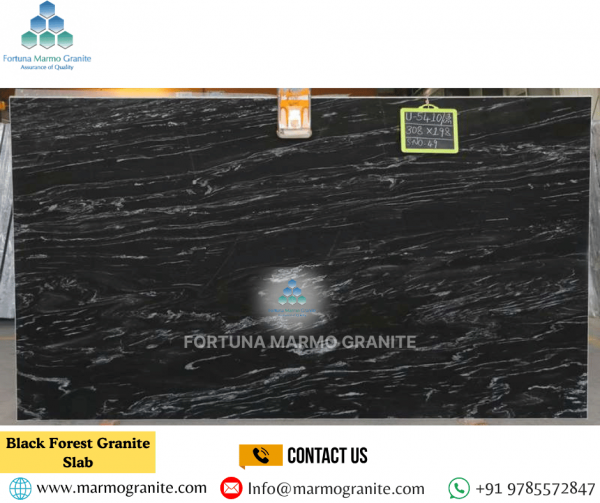Marble vs. Granite: Key Differences to Help You Decide
Marble vs Granite When it comes to selecting the perfect natural stone for your home, marble and granite often emerge as top contenders. Both stones have earned their reputation for timeless beauty, durability, and adding a touch of luxury to any space. Whether you're envisioning a sleek kitchen countertop, an elegant bathroom vanity, or durable flooring, understanding the unique characteristics of marble and granite is crucial in making the right choice.
Marble vs Granite Each stone has its own distinct qualities — from the intricate veining of marble that exudes sophistication to the rugged strength of granite that promises long-lasting resilience. But what truly sets them apart? Is one better suited for high-traffic areas? Which requires more maintenance? And how do their aesthetics influence the overall design of a room?
In this guide, we'll delve into the key differences between marble and granite, comparing their appearance, durability, maintenance needs, and cost. Whether you lean toward the classic charm of marble or the bold resilience of granite, this comparison will help you confidently choose the stone that best fits your lifestyle and design vision. Let's explore what makes these natural stones unique and discover which one is the perfect match for your home.
1. Origins and Composition
Marble: Marble is a metamorphic rock formed from limestone that undergoes intense heat and pressure over time. This process results in a crystalline structure, giving marble its signature veining and luxurious appearance. The presence of minerals like calcite or dolomite contributes to the color variations in marble. Each slab tells a story of geological transformation, with subtle changes in mineral composition influencing the overall hue and veining.
Granite: Granite, on the other hand, is an igneous rock that forms from the slow crystallization of magma beneath the Earth's surface. Composed mainly of quartz, feldspar, and mica, granite is renowned for its speckled appearance and incredible durability. The slow cooling process allows large crystals to form, giving granite its granular texture and distinct patterns.
2. Appearance and Aesthetic Appeal
Marble: Marble's elegance lies in its soft, flowing veins that contrast beautifully against its often lighter background. Each slab is unique, with patterns that resemble natural art. The smooth, polished surface of marble adds a touch of sophistication, making it a favorite for luxurious settings. Classic white marbles, like Carrara or Calacatta, have been used for centuries in sculptures and grand architectural projects, signifying opulence and grace.
Granite: Granite offers a more diverse range of colors and patterns, with flecks and specks resulting from its varied mineral content. Its bold appearance can add a dramatic touch to interiors, and the availability of darker shades makes it versatile for modern designs. From deep blacks and blues to earthy reds and greens, granite can complement various decor styles, offering both richness and depth.
3. Durability and Hardness
Marble: Marble is softer than granite, making it more susceptible to scratches, chips, and etching, especially from acidic substances. This softness, however, allows intricate carving and detailing, making marble a popular choice for ornate designs and sculptures. Despite its vulnerability, with proper care, marble can maintain its beauty for decades, aging gracefully and developing a unique patina over time.
Granite: Granite is one of the hardest natural stones, highly resistant to scratches and heat. This makes it ideal for high-traffic areas such as kitchen countertops and flooring. Its robustness ensures that it can withstand daily wear and tear while retaining its pristine appearance, making it a practical choice for busy households.
4. Maintenance Requirements
Marble: Marble requires regular sealing to protect against staining and moisture penetration. Spills should be cleaned immediately to prevent etching, especially from acidic liquids like lemon juice or vinegar. Routine cleaning with pH-neutral cleaners and soft cloths is essential to maintain its sheen. Additionally, marble may benefit from periodic professional polishing to restore its original luster.
Granite: Granite is comparatively easier to maintain, needing only periodic sealing. Its resistance to stains and bacteria makes it a practical choice for kitchens and bathrooms. Cleaning granite surfaces with mild soap and water is usually sufficient to keep them looking their best. The occasional resealing helps preserve its non-porous surface, ensuring long-term durability.
5. Cost Considerations
- Marble: Marble tends to be more expensive, especially for rare varieties. The cost reflects its timeless appeal and the craftsmanship required to cut and install it. Factors such as origin, color rarity, and slab thickness can significantly influence the price. Custom designs and intricate installations may further add to the overall cost.
- Granite: Granite is generally more affordable than marble, although prices can vary based on color, origin, and slab thickness. Its abundance makes it more budget-friendly while still providing a luxurious look. Homeowners seeking a cost-effective solution without compromising on beauty often gravitate toward granite.
6. Applications and Suitability
Marble: Marble is ideal for low-traffic areas, decorative features, and spaces where elegance is a priority, such as bathroom vanities, fireplace surrounds, and statement pieces. It is often used in formal settings where its aesthetic appeal takes precedence over durability. In homes aiming for a refined ambiance, marble is the go-to choice.
Granite: Granite's durability makes it perfect for high-traffic areas like kitchens, outdoor patios, and flooring. It stands up well to daily wear and tear while retaining its beauty. Granite's resilience also makes it suitable for outdoor applications, as it can withstand harsh weather conditions without compromising its structural integrity.
7. Heat and Scratch Resistance
Marble: Marble is heat-resistant but can suffer from thermal shock if exposed to extreme temperature changes. It is also more prone to scratching, making the use of cutting boards and heat pads essential for protecting its surface. Despite these considerations, its resistance to ambient heat makes it a popular choice for fireplace surrounds.
Granite: Granite excels in both heat and scratch resistance, making it a superior choice for kitchens and areas exposed to heavy use. Hot pots and pans can be placed directly on its surface without fear of damage, adding to its practicality in culinary spaces.
8. Environmental Impact
Both marble and granite are natural stones, meaning their extraction has some environmental impact. However, granite's abundance makes it slightly more eco-friendly. Choosing locally sourced materials can reduce your carbon footprint. Additionally, natural stones like marble and granite offer longevity, reducing the need for frequent replacements and contributing to sustainable building practices.
9. Decision-Making Factors
When deciding between marble and granite, consider the following:
- Aesthetic Preference: Choose marble for a refined, classic look and granite for bold patterns and color variations.
- Usage: Opt for granite in high-use areas and marble for decorative, low-traffic spaces.
- Maintenance Commitment: Marble demands more upkeep, while granite offers easier care.
- Budget: Granite often provides a cost-effective solution without compromising beauty.
- Long-Term Vision: Consider the aging process of each stone and how it aligns with your design vision. Marble develops a patina, adding character, while granite maintains a more consistent appearance over time.



